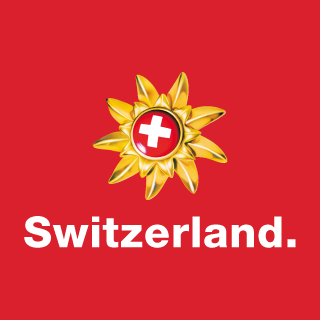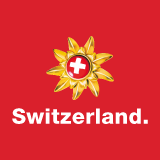Alp cheese – treats from the Alps.
Alp cheese is only produced in the summer - with milk from the cows, goats or sheep that graze on the Alpine pastures. It is only when the milk production and cheese making take place on the mountains themselves that the cheese may be called Alp cheese.
Since the 15th century, people living north of the Alps have been using rennet – a substance from the stomach of a cow – to make hard cheeses. This hard cheese was greatly appreciated because it was much more durable than the cottage cheese that people had been making before. It allowed them to create a milk supply for the winter. And so were the foundations of the Swiss cheese culture laid... Until the 18th century, hard cheese was made only in the summer in the Alps. The milk yields of those times meant that the cows were dry for a long time in the winter and the rest of the milk produced was used the household. This changed in the early 19th century, when the practice of intensive agriculture enabled cheese to be produced in the valleys and during the winter – i.e. at times when the cows were being fed hay. The cheese made year-round in the valleys in the mountainous regions is now known as mountain cheese - to distinguish it from Alp cheese.
Speciality Alp cheese
The term Alp cheese is protected and may only be used for cheeses that are made in summer on the Alpine farms. The cows graze freely on the mountains and seek out their own food on the rich, lush Alpine pastures. Their summer home in the mountains gives them a culinary high, as here they enjoy eating hundreds of different herbs – as opposed to only a few dozen types in the valleys. This healthy food diversity, the great freedom of movement and the crystal clear mountain water creates tasty raw milk that can be gently made into cheese while still at body temperature and without the need for major transport routes.Tasty and healthy
All these criteria do not only have a positive impact on the taste of Alp cheese but they also make it particularly rich in omega-3 fatty acids, which have a positive effect on the human cardiovascular system. Confirmation of these recent scientific findings is found, interestingly enough, in a melody, which is often sung by the Alpine farmers and in which the health-giving virtues of cheese and butter are extolled: "Miär Sennä heis luschtig, mier Sennä heis guet, hei Chäs und hei Ankä (Butter), das git üs guets Bluet…"Production with body and soul
No sooner has the cow been milked than the fragrant raw Alpine milk is processed on site in a "Chessi" (a big cheese kettle) over a wood fire. Although many Alpine cheese dairies have modern facilities, the Alp cheese is still mainly produced by hand. Instinct and experience are the main qualities required. Primitive utensils and elaborate methods are often used. Smoke from the wood fire, various locally-grown herbs, and individual production methods and traditions determine the flavour, colour, shape, maturity and level of hardness of the cheese. This creates a large variety of various types – semi-hard, hard and extra hard Alp cheeses for grating, breaking up and slicing, from young mild cheeses to more spicy varieties.Coveted rarity
The limited duration of production and the varying storage times mean that Alp cheeses are not always available everywhere. However, this makes it a very desirable speciality. The cheese may be directly obtained in the Alps during the summering season. During the year, when it is available, it is on sale at some large retailers, in cheese stores or directly from the producers.Show dairies and cheese cellars
In Switzerland there are many smaller and larger cheese dairies, including many Alpine dairies. There you can not only watch the cheese makers at work, but often, under their expert guidance, you can lend a hand yourself. The cheese cellars are also worth a visit as here hundreds of cheeses can be stored in the one place and in the correct way. Some cheese cellars offer tastings and tours (e.g. Etivaz, Gstaad, Goms).Chästeilet tradition
Especially in the canton of Bern, the end of the summer grazing season is celebrated with what is known as the "Chästeilet". At the end of September, the Alp cheeses are divided among the owners of the cows. Since not all cheeses are of equal quality, lots are drawn to decide which cheese goes to whom. The cheese is divided in proportion to the milk produced by the cows of the respective owners during the summer. In many places, the Chästeilet is also a cause for celebration and ends in a traditional festival, with music and a large party, and is an unforgettable experience for locals and visitors alike.Awards and Alp cheese markets
At the end of the Alpine summer pasture season, the Alpine farmers compete in the regional cheese competitions. Juries evaluate the cheeses by various criteria and select the prize cheese. These events are often associated with a festival or an Alp cheese market.Quality product with a guarantee of origin
With the Alp cheese consulting services and the certification of the Swiss Alpine farms, Alp cheese comes with a high standard of quality. Most of the Swiss Alp cheese is produced according to the AOP specifications. AOP («Appelation d‘Origine protégée») is a protected label and guarantees that 100 percent of the cheese comes from the area of origin. The following cheeses bear the AOP label:- L’Etivaz AOP
- Berner Alp- und Hobelkäse AOP
- Tessiner Alpkäse AOP
- Le Gruyère d’alpage AOP
- Vacherin Fribourgeois d’alpage AOP
- Alpsbrinz AOP
Additional links:
Additional information about Swiss milk producers Detailed information about cheese on www.swissworld.org

